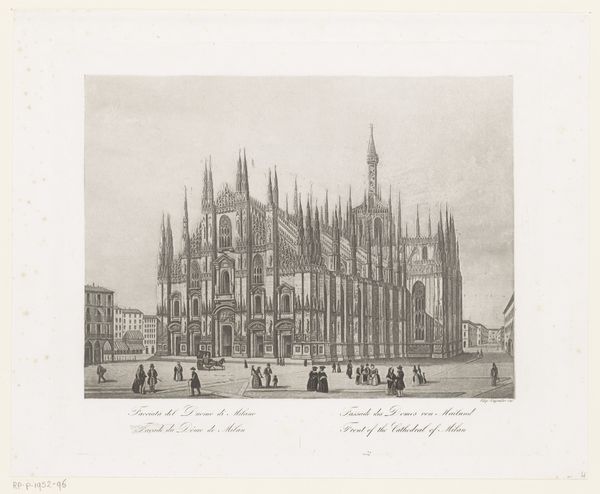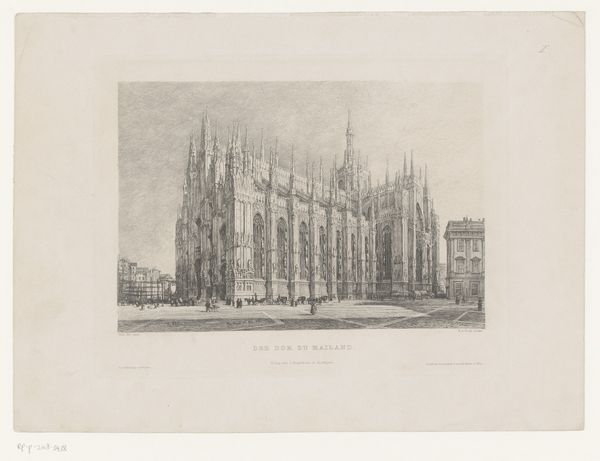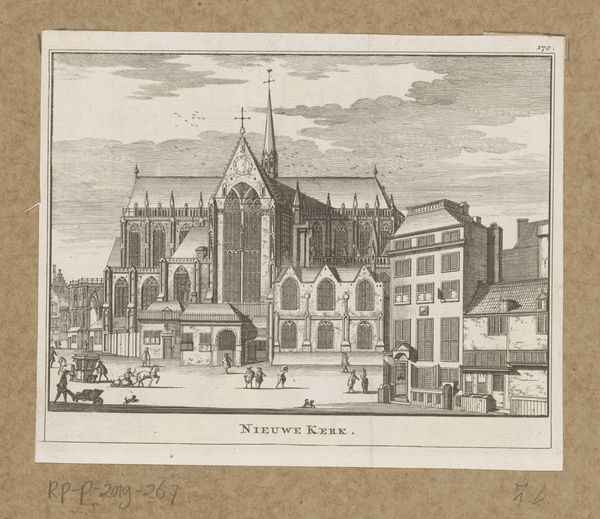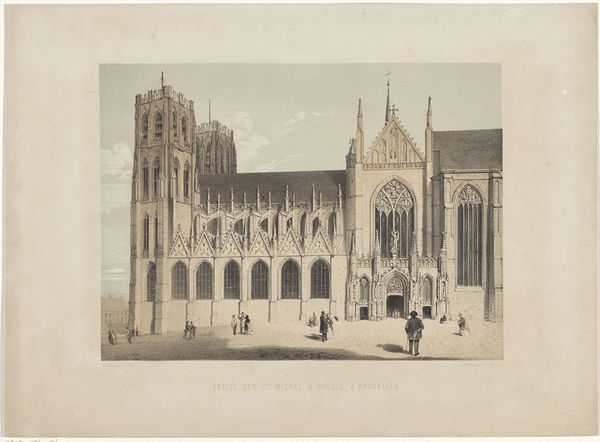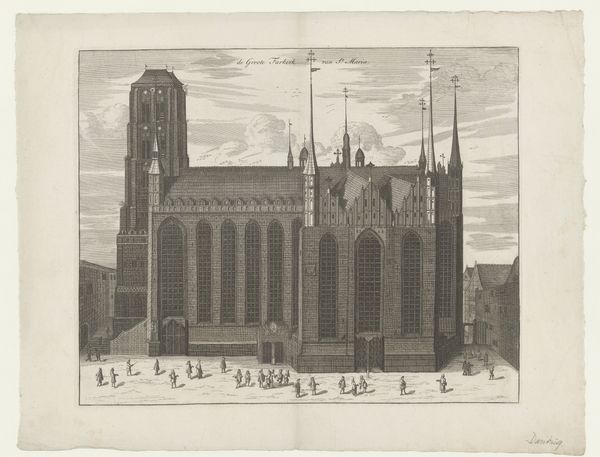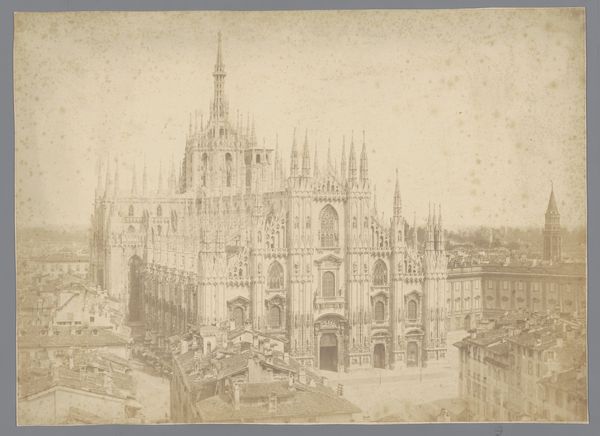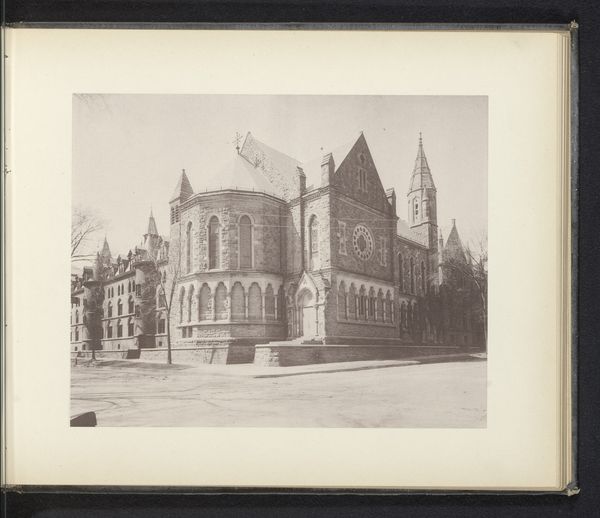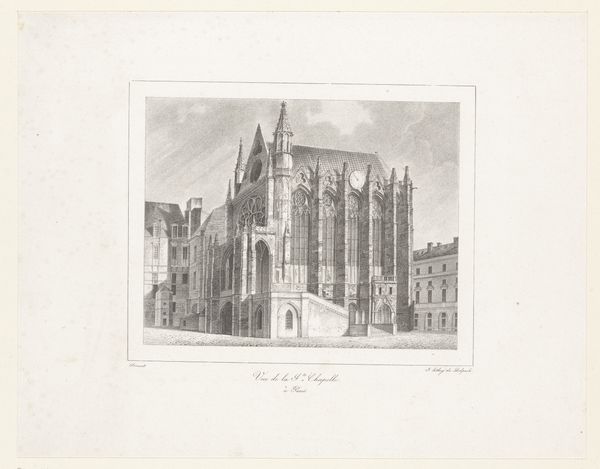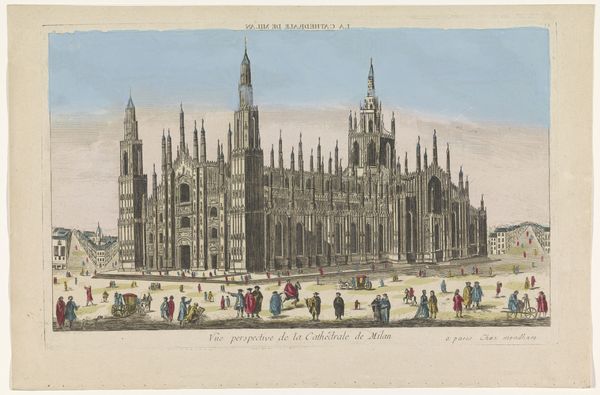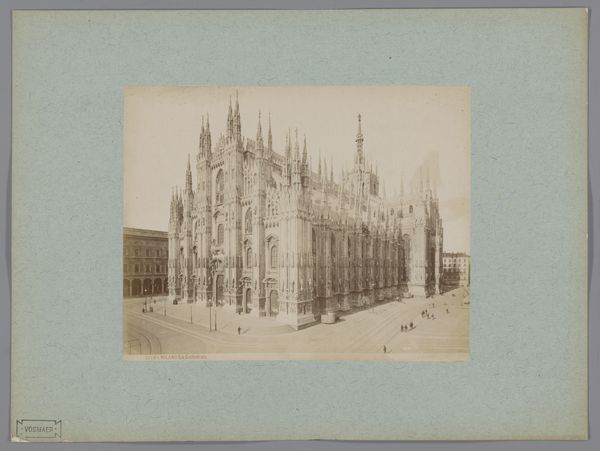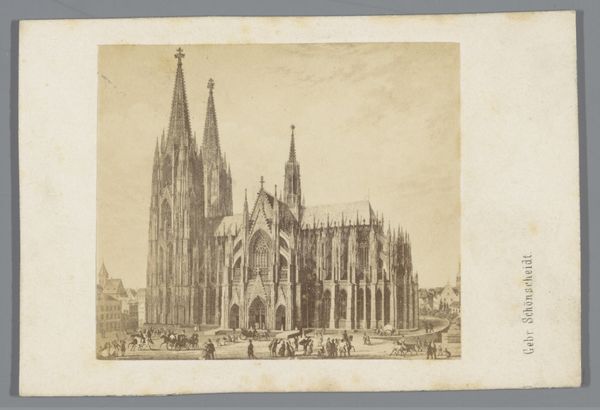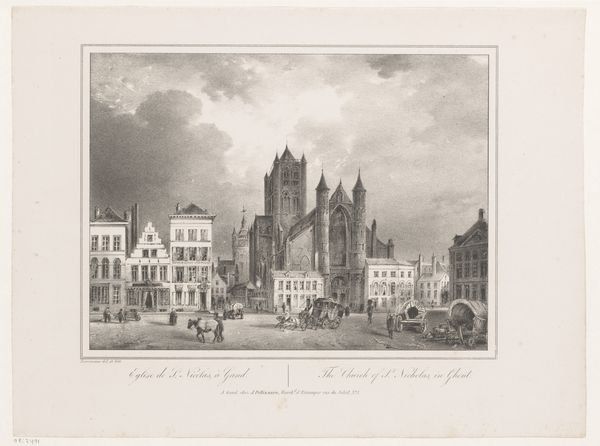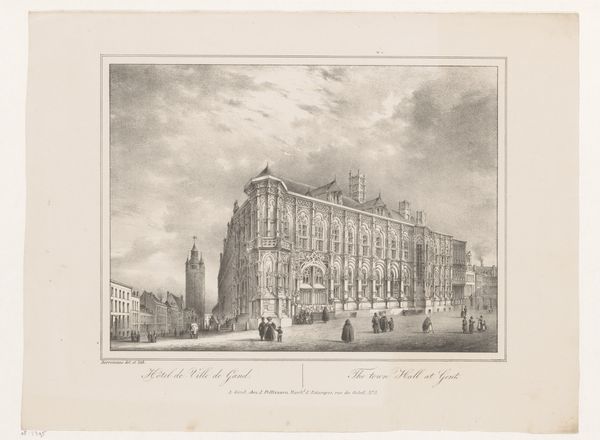
print, engraving, architecture
#
neoclacissism
# print
#
cityscape
#
engraving
#
architecture
Dimensions: height 204 mm, width 244 mm
Copyright: Rijks Museum: Open Domain
Curator: This engraving, dating from after 1814, presents Filippo Naymiller's rendering of "Zijaanzicht van de Dom van Milaan" – a side view of the Milan Cathedral. The precision of line captures the Cathedral's immense scale. What's your initial impression? Editor: The cathedral looms, a testament to architectural ambition. But I also see people scattered almost like ants at its base, highlighting questions of power structures inherent within grand spaces—who are these people in relation to this monument? What hierarchies do we observe and recreate in places that inspire or overwhelm? Curator: That's a striking point. Neo-classicism often used architectural renderings to convey specific social messages, to position the viewer in relation to power. Editor: Indeed. Consider the iconography of light and shadow—the cathedral brightly lit, almost luminous, while the people exist more subtly, their details rendered with softer contrast. What symbolism might Naymiller intend by this treatment? Does it speak to religious fervor, or to social divides? Curator: Possibly both. It also highlights the architectural precision, characteristic of the period. The symbolism embedded in neo-classicism extended beyond the religious; it invoked civic duty, historical consciousness, a vision for society structured around rationality and order. This side view even frames it amidst the bustle of daily life – carriages, citizens strolling. It’s about integration with Milanese identity. Editor: Right, so the figures, almost uniformly bourgeois it seems, aren’t incidental; their placement reflects a desire to construct a specific civic identity tied to this monumental sacred structure, maybe indicating aspirations or newly reinforced positions of authority in post-Napoleonic Milan. Curator: Precisely. This work encapsulates complex social, political, and spiritual narratives in one cityscape. Thank you, it really is fascinating to discuss the context further with your reading. Editor: My pleasure, discovering deeper visual echoes in art is always thought-provoking.
Comments
No comments
Be the first to comment and join the conversation on the ultimate creative platform.
